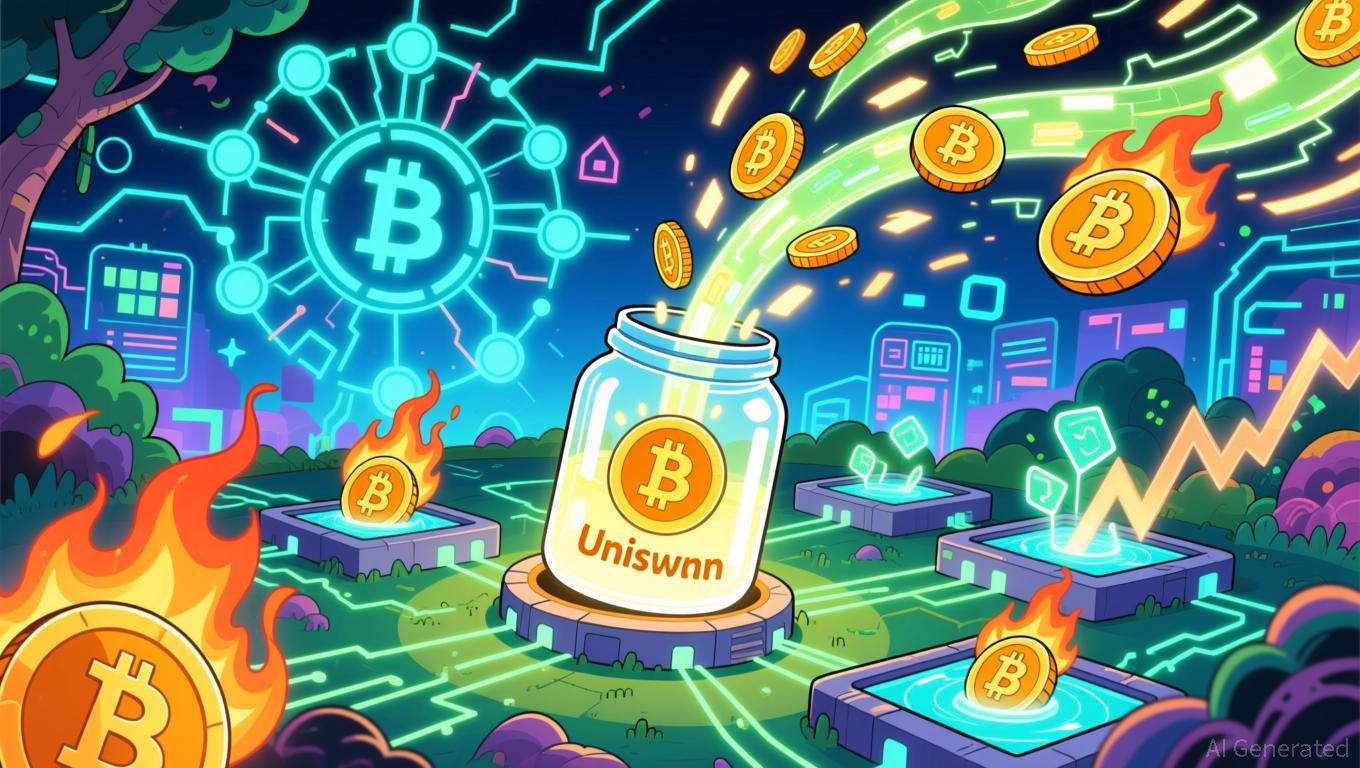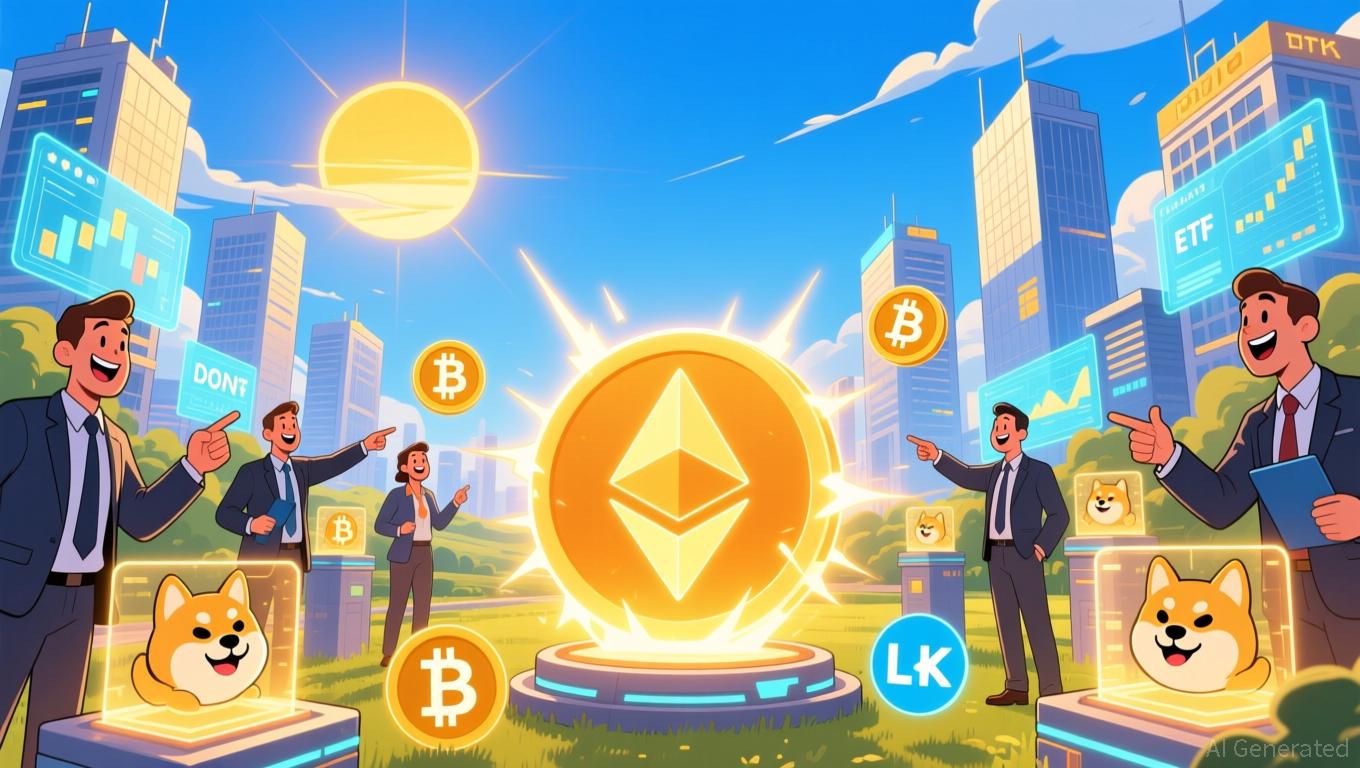Uniswap News Today: Addressing DeFi's Value Gap: Uniswap's Debated Fee Restructuring
- Uniswap's UNIfication proposal redirects trading fees to a "token jar," enabling UNI holders to burn tokens for assets, aiming to align protocol growth with token value. - The plan includes a 100M UNI retroactive burn (16% of supply) and Layer-2 integration to sustain supply reduction, addressing DeFi's historic disconnect between usage and token valuation. - Critics warn liquidity providers may lose earnings, while a UK whale's $10M short positions highlight market skepticism despite community debates o
Uniswap’s UNIfication Proposal: A New Era for DeFi Tokenomics
Uniswap has introduced the UNIfication proposal, a plan designed to directly connect the protocol’s trading fees with UNI token buybacks. This initiative has received strong early backing, suggesting a major transformation in the landscape of decentralized finance (DeFi) token economics. Although UNI’s market capitalization has dropped to $6.8 billion from its previous high of $21.7 billion, Uniswap’s monthly trading volume soared to $116.6 billion in 2025—almost three times higher than in 2023. This contrast between the protocol’s growth and the token’s declining value has fueled discussions about potential misalignments in DeFi governance. Supporters believe the proposal could address these issues by tying trading activity more closely to token demand.
The core of the UNIfication proposal is a fee switch mechanism that diverts a share of Uniswap v2 and v3 trading fees into a dedicated “token jar.” UNI holders would have the option to burn their tokens in exchange for assets from this jar, effectively reducing the token’s circulating supply and potentially increasing its value. Additionally, the proposal suggests a one-time burn of 100 million UNI tokens—representing 16% of the current supply—to compensate for fees missed during periods when the fee switch was inactive. By integrating revenue from Layer-2 solutions, this approach aims to create a sustainable model for reducing supply and rewarding long-term holders. However, some critics caution that liquidity providers (LPs) might see their earnings decrease as a result of the redirected fees.
Reactions from the market have been varied. A notable investor, known by the address 0xa31, has taken advantage of UNI’s price swings by shorting the token along with meme coins such as ASTER and MON. As of November 26, this investor had realized $6.23 million in profits from short positions, with an additional $4 million in unrealized gains. This activity reflects ongoing skepticism about UNI’s short-term prospects, even as the community debates the proposal’s long-term impact. Meanwhile, the UK’s fiscal policies have drawn comparisons to Uniswap’s strategy, particularly Chancellor Rachel Reeves’ budget proposal to increase international student fees in order to fund grants for domestic students—a move seen as another example of value redistribution.

Industry experts have largely welcomed the proposal’s potential to reshape DeFi economics. Crypto analyst Simon Dedic observed that the combination of the fee switch and retroactive token burns could prompt other DeFi projects to focus more on increasing token value, which may help restore investor confidence. He emphasized the importance of Uniswap’s initiative, suggesting it could bridge the longstanding gap between protocol performance and token valuation. Nonetheless, the proposal faces challenges. Its reliance on token burns differs from alternative models like veLocks, which reward long-term engagement through enhanced voting power. There are also concerns about the potential impact on liquidity providers and the possibility that less reputable pools could lose trading volume after the changes take effect.
As the DeFi sector considers the implications of the UNIfication proposal, its adoption could set a new standard for aligning token incentives with protocol success. By tackling structural inefficiencies and introducing features such as Protocol Fee Discount Auctions (PFDA) to capture MEV internally, Uniswap is positioning itself to remain competitive in the increasingly crowded decentralized exchange (DEX) market. The results of this initiative are likely to shape broader trends in the industry, especially as established financial players like Coinbase roll out their own ambitious DeFi offerings.
Disclaimer: The content of this article solely reflects the author's opinion and does not represent the platform in any capacity. This article is not intended to serve as a reference for making investment decisions.
You may also like
The KITE Listing Boom: Analyzing Investor Attitudes and Trust from Institutions
- Kite Realty Group Trust (KRG) reported a $4.82M revenue shortfall but 2.1% same-property NOI growth in Q3 2025, driven by 79% grocery-anchored retail portfolio expansion. - Institutional ownership shows duality: Vanguard/JP Morgan hold $1.2B shares, while CEO John Kite sold 48% of holdings and Intech reduced stakes by 16.8%. - Analysts highlight KRG's 7.4% dividend growth and industrial real estate pivot amid AI/logistics trends, yet caution against retail REIT sector risks rated "F" for macroeconomic vu

Bitcoin News Today: Is Bitcoin Facing a Liquidity Gap? Could a Crash Like 2022 Be on the Horizon?
- Glassnode analysts warn Bitcoin's STH P/L ratio at 0.07x (lowest since 2022) signals liquidity vacuum risks, potentially forcing price below $81,000 "True Market Mean." - Historical patterns show LTH sell-offs (1.57M BTC in Q3) and compressed profit margins (7D-SMA at 408x) often precede major market tops, raising bearish concerns. - Institutional defensiveness and weak futures demand highlight fragile market structure, with $80,000-$85,000 consolidation critical for confirming bullish reversals. - While

Dogecoin News Today: Grayscale's DOGE ETF Seeks to Elevate Meme Coin to Blue-Chip Status
- Bitcoin stabilized on Thanksgiving while Ethereum , Dogecoin , and XRP declined, with analysts emphasizing BTC's critical support levels. - Grayscale's GDOG ETF and BitMine Immersion's $83M ETH purchase highlight crypto's financialization, with the latter holding 2.9% of circulating ETH. - Grayscale's DOGE ETF debuted with modest $1.8M inflows, reflecting DOGE's weaker institutional appeal compared to Bitcoin despite its 37% 30-day gain. - Tom Lee forecasts ETH to $7,500 by year-end, citing stablecoins a

Infrastructure-Focused Economic Growth in Webster, NY
- Webster , NY leverages $9.8M FAST NY grant to upgrade infrastructure, targeting industrial growth via Xerox campus redevelopment and blight removal. - Xerox's 300-acre brownfield site transforms into a $650M industrial hub by 2025, creating 250 jobs at fairlife® dairy facility with enhanced utilities. - Blight removal at 600 Ridge Road and $1.8M road realignment projects unlock 300 acres for development, improving logistics and downtown connectivity. - WEDA and municipal coordination streamline land sale
